#Province of Barcelona
Explore tagged Tumblr posts
Text


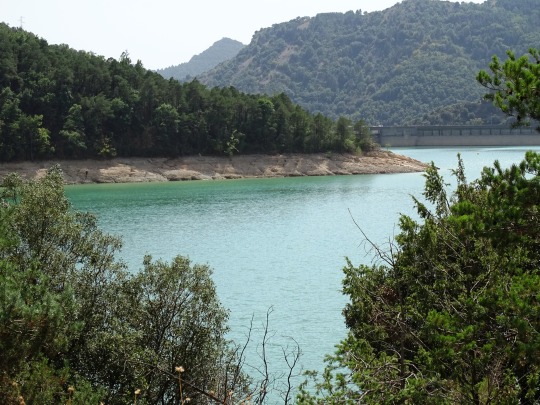




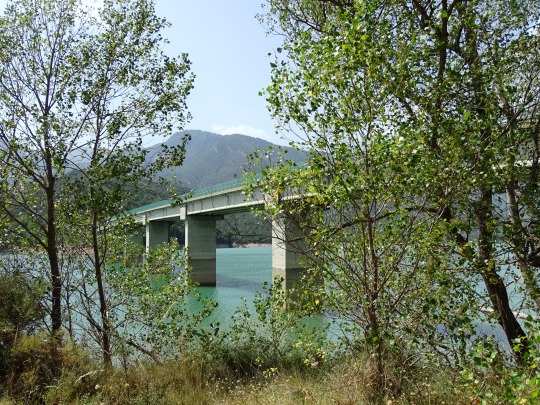
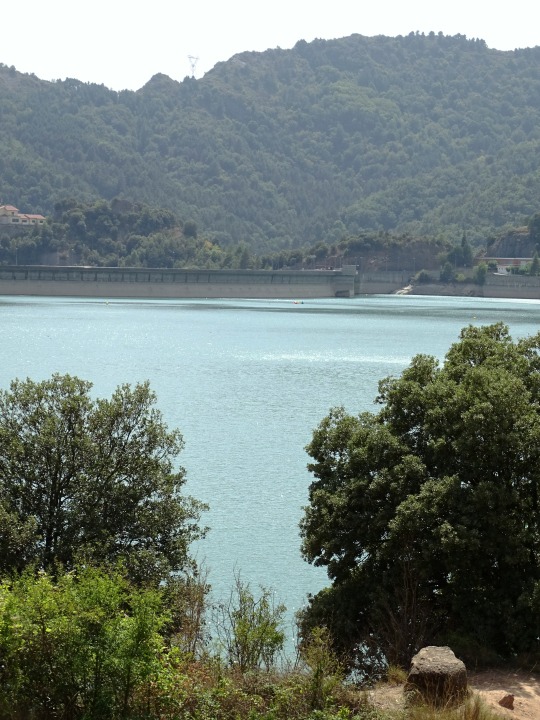
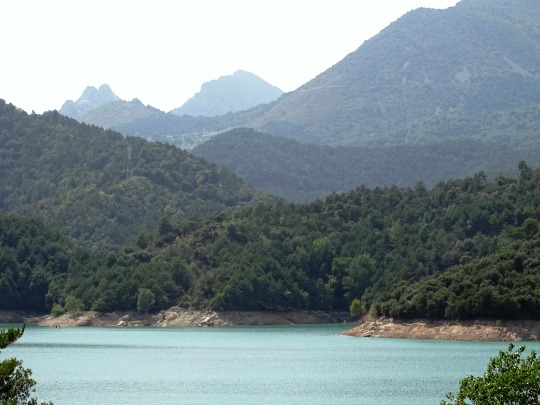
Pantà de la Baells, Spain (No. 1)
The Baells reservoir is a Spanish hydraulic infrastructure located on the Llobregat River, in the Bergadá region, province of Barcelona, Catalonia. It consists of a dam located in the municipality of Serchs. It extends through the terms of Serchs and Vilada, between the pre-Pyrenean mountains of Catllarás, to the east, and Figuerassa and Arades, to the west. To the right of the reservoir runs the C-16 road, between the Cadí tunnel and Berga-Manresa, and is crossed by the C-26, which links Berga and Ripoll.
The aim of the reservoir is to regulate the upper basin of the Llobregat River, supply water to the metropolitan area of Barcelona and produce hydroelectric energy.
Source: Wikipedia
#Pantà de la Baells#Baells Reservoir#lake#travel#original photography#vacation#tourist attraction#landmark#landscape#architecture#countryside#forest#woods#summer 2021#province of Barcelona#Catalonia#España#Southern Europe#Northern Spain#lake shore
21 notes
·
View notes
Text


Morro de l'Abella, Tavertet, Province of Barcelona, Spain
Andrea Rodriguez
0 notes
Text
"In the Canary Islands, in Barcelona, and in Chile, a unique fog catcher design is sustaining dry forests with water without emissions, or even infrastructure.
Replicating how pine needles catch water, the structure need only be brought on-site and set up, without roads, powerlines, or irrigation channels.
Fog catching is an ancient practice—renamed “cloud milking” by an EU-funded ecology project on the Canary Islands known as LIFE Nieblas (nieblas means fog).
“In recent years, the Canaries have undergone a severe process of desertification and we’ve lost a lot of forest through agriculture. And then in 2007 and 2009, as a result of climate change, there were major fires in forested areas that are normally wet,” said Gustavo Viera, the technical director of the publicly-funded project in the Canaries.
The Canaries routinely experience blankets of fog that cloak the islands’ slopes and forests, but strong winds made fog-catching nets an unfeasible solution. In regions such as the Atacama Desert in Chile or the Atlas Mountains of North Africa, erecting nets that capture moisture particles out of passing currents of fog is a traditional practice.
LIFE Nieblas needed a solution that could resist powerful winds, and to that end designed wind chime-like rows of artificial pine needles, which are also great at plucking moisture from the air. However, unlike nets or palms, they efficiently let the wind pass through them.
The water is discharged without any electricity. There are no irrigation channels, and no machinery is needed to transport the structures. The natural course of streams and creeks need not be altered, nor is there a need to drill down to create wells. The solution is completely carbon-free.
WATER IN THE DESERTS:
China Announces Completion of a 1,800-Mile Green Belt Around the World’s Most-Hostile Desert
Billions of People Could Benefit from This Breakthrough in Desalination That Ensures Freshwater for the World
Scientists Perfecting New Way to Turn Desert Air into Water at Much Higher Yields
Sahara Desert Is Turning Green Amid Unusual Rains in Parts of North Africa
Indian Engineers Tackle Water Shortages with Star Wars Tech in Kerala
In the ravine of Andén in Gran Canaria, a 35.8-hectare (96 acres) mixture of native laurel trees irrigated by the fog catchers enjoys a survival rate of 86%, double the figure of traditional reforestation.
“The Canaries are the perfect laboratory to develop these techniques,” said Vicenç Carabassa, the project’s head scientist, who works for the Center for Ecological Research and Forestry Applications at the University of Barcelona. “But there are other areas where the conditions are optimal and where there is a tradition of water capture from fog, such as Chile and Morocco.”
In Chile’s Coquimbo province, the town of Chungungo is collecting around 250 gallons a day from a combination of locally-made fog catchers and LIFE Nieblas’ pine needle design, the Guardian reports."
-via Good News Network, December 30, 2024
601 notes
·
View notes
Photo

2024 September 21
Sunrise Shadows in the Sky Image Credit & Copyright: Emili Vilamala
Explanation: The defining astronomical moment of this September's equinox is at 12:44 UTC on September 22, when the Sun crosses the celestial equator moving south in its yearly journey through planet Earth's sky. That marks the beginning of fall for our fair planet in the northern hemisphere and spring in the southern hemisphere, when day and night are nearly equal around the globe. Of course, if you celebrate the astronomical change of seasons by watching a sunrise you can also look for crepuscular rays. Outlined by shadows cast by clouds, crepuscular rays can have a dramatic appearance in the twilight sky during any sunrise (or sunset). Due to perspective, the parallel cloud shadows will seem to point back to the rising Sun and a place due east on your horizon on the equinox date. But in this spectacular sunrise skyscape captured in early June, the parallel shadows and crepuscular rays appear to converge toward an eastern horizon's more northerly sunrise. The well-composed photo places the rising Sun just behind the bell tower of a church in the town of Vic, province of Barcelona, Catalonia, Spain.
∞ Source: apod.nasa.gov/apod/ap240921.html
82 notes
·
View notes
Text
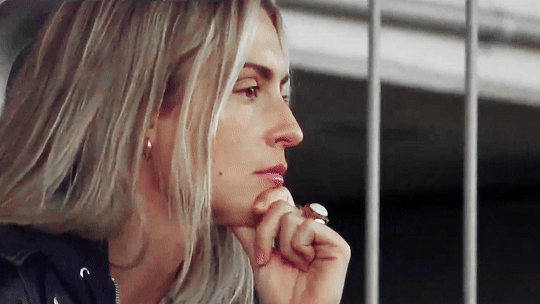
Infatuation.
Alexia Putellas x Reader.
Warnings: Angst, unrequited love (sort of), poor english probably.
You and Alexia Putellas had been friends for years, you were in youth clubs together until you both arrived at Barcelona at the same time.
You were inseparable, and you hung out together all the time.
However truth be told, you used to like her. A lot. Maybe you still do, but it didn't matter. Because she would never see you in that way. It didn't matter.
So, as you laid down under the stars on a blanket on a small hill in the province of Barcelona with a bottle of whisky between you; you felt the courage rush through your system.
"I used to love you, you know?" You were fairly tipsy now, much more so than Alexia, and your words were slurred.
She chuckles, a bemused smile on her stupidly perfect face, "What do you mean used to? We're best friends, idiota! I would've thought you still did."
"No idiot, I mean love you. As in I used to have feelings for you." you say, taking a long swig of the pungent alcohol, grimacing as you feel the delightful sting of it in your throat and the warmth it brings to your stomach.
"But it's okay, I don't love you that way anymore." your words are slurred and you stare up at the sky which is freckled with the brightest stars you think you've ever seen, while the truly brightest star you've ever seen stares at your face from beside you.
Hurt writes itself into the blonde's expression, her voice shaky as she next speaks, "I didn't know you ever were."
She swallows thickly and downs a gulp of the bitter liquid before her, her brows furrowed as you hummed absentmindedly, still focused on the sky.
You thought about which stars were the brightest and which constellations reminded you of the once pink haired midfielder beside you, while she stared at your face, thinking about what could've been if you still loved her that way.
Because she really, really loved you that way.
And you didn't love her that way anymore. It was truly a case of right people wrong time. And Alexia would have to make her peace with that.
If only she knew how infatuated with her you still were.
***
A/N: short one, but hope it’s good nonetheless :)
#woso#woso imagine#woso x reader#woso soccer#futból#futbol#footy#football#writer is not english#poor english#angst#alexia putellas#alexia putellas x reader#alexia putellas x y/n
266 notes
·
View notes
Note
bon dia!! I'm moving to Catalunya this fall to be an English teacher's assistant and I'm so so excited to learn catalan and explore your beautiful country 💗 Do you have any recommendations for places or activities around the Lleida región? Moltes gràcies ☺️
Bon dia!
In Lleida (the city itself), the most iconic site to visit is the Seu Vella (old cathedral). It's a Medieval cathedral that was also used as a stronghold in war in the Early Modern Period. It's located on top of a hill, so there's great views of the whole city from there.
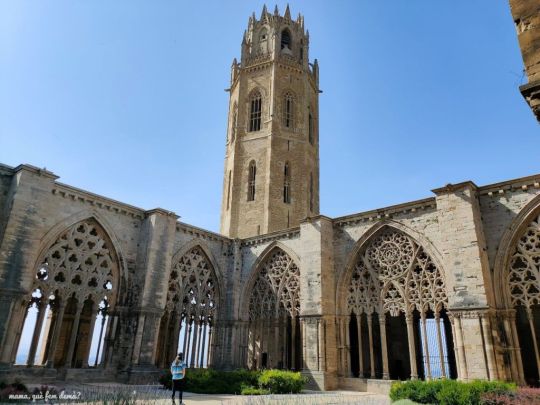
(Photo)
A natural place: the Congost de Mont-rebei (Mont-rebei Canyon). This is the river that is used as the administrative dividing line between Catalonia on East and Aragon in the West (La Franja). It's a very beautiful place, but I don't know what it's like now with the drought. There's a very nice walk near the La Pertusa chapel and in an excavated part of the rock walls so you can see the river. Many people also go kayaking or similar things but I don't know if there's enough water now. (For context, we're having a very bad drought, it has barely rained in 3 years and all the reservoirs are practically empty).
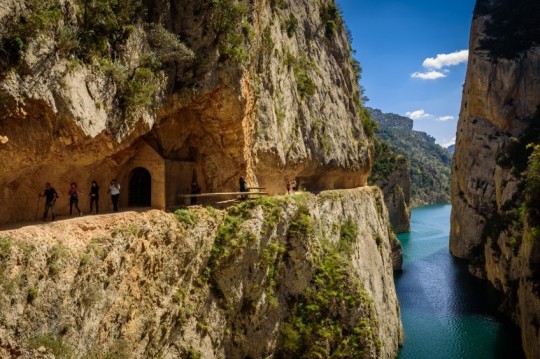
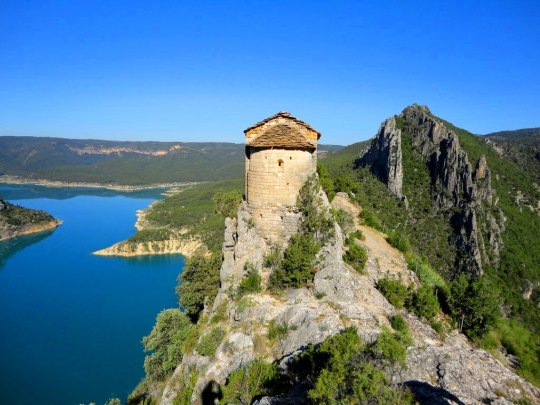
(Photo 1 / Photo 2)
In spring, it's also very pretty to see the fruit tree fields around Lleida. The most popular town to go to is Aitona, but you can also see it in Seròs, Alcarràs, Torres de Segre, and others.

(Photo)
Some historical small towns near Lleida that are nice to visit include Vallbona de les Monges with its Medieval monastery, and the towns around the Riucorb river (I would recommend the town Guimerà, and also Verdú to visit its tower), Montfalcó Murallat is also nice but very small. For a bigger town: Cervera. It's interesting to see the university building in Cervera, when Philip V (Spanish king who conquered Catalonia in 1714) made all the universities in Catalonia, Valencia, Mallorca and Aragon close down, he only allowed 1 university, which he moved to Cervera because it was a city where many people had supported him in the war and because it was in a rural area so he could closely control the students (university students in Barcelona and other places had been very involved in the war against Philip V).

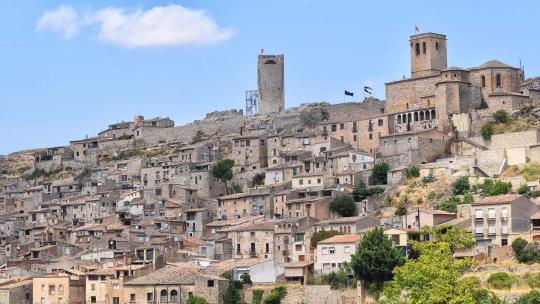
(Photo 1: Santa Maria de Vallbona monastery. Photo 2: Guimerà)
An archaeological site: Fortalesa dels Vilars in Arbeca. This was a fortress inhabited between 775 and 300 BC, you can visit the archaeological site and the museum with the objects found. Arbeca is also famous for its olives (called arbequines), definitively worth a try 😋🫒 you'll find them in most markets and supermarkets.
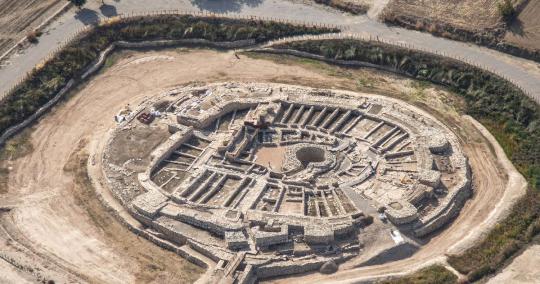
(Photo)
If you're near, when it comes to archaeology, there are also some prehistorical rock art sites. The most well-known in the area is the wall La roca dels moros in Cogul.
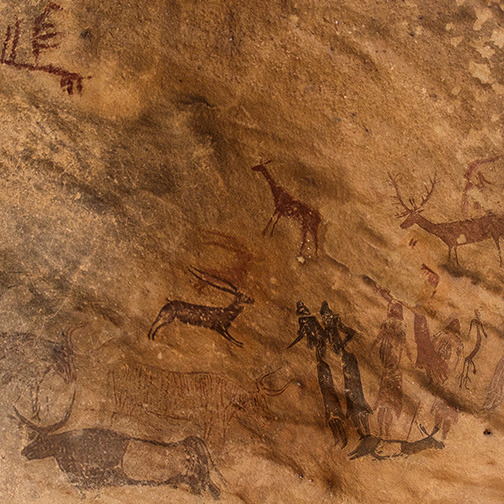
(Photo 1)
Those are the places I'd recommend closest to Lleida. If you can move more, I also really recommend going up to the Pyrenees mountains (in the north of the Lleida province). There's lots of Medieval architecture there, lots of cute villages and some wonderful natural parks.
The bad thing about the Lleida area is that it doesn't have as good public transport as more densely populated areas, because outside of Lleida city itself it's very rural. So you might have to rely on cars.
Another activity in Lleida: the most famous food from there is snails, there are different recipes, the most widespread is caragols a la llauna, but they also serve them with allioli or with vinaigrette. There's also many other delicious foods, but that is what most people associate with Lleida the most.
Aaand that's what comes to mind in the areas near Lleida. I'm not from that province so I don't know it as well as other areas, if someone reading this has more recommendations please feel free to add them in the reblogs or comments.
I hope you enjoy your time in Catalonia!
68 notes
·
View notes
Note
Hi, can I request a Axel Kovačević x reader fic in wich the reader is from Furia de pantera but she is not from Barcelona she is from andalusia (you can choose the province you like the most).
So the reader saw how Sensei Wolf treats Axel and has been thinking about it, and she feels guilty about having done nothing about it. Her team see how she is feeling down, so they say to go out to a bar to decompress, and obviously, she says yes. On their way to the bar, after having a bit of girl talk with Maria and Mercedes while getting dressed, she sees Axel in the beach so she tells them to go ahead and that she will meet them in the bar. She talks with him and asks him to go to the bar with her, but he says no because Sensei Wolf has banned him, so he stays focused on the tournament 🙄
So she invites him to her apartment, and she tells Axel that she saw what happened and that she regrets not doing anything and the Axel kisses her and smut happens (?)
I don't know if this makes any sense it comes from the scribbles of one of my notebooks that I have for when I have dreams that I don't want to forget and is really messy. Sorry if it's too detailed. I don't know how to make a request without giving too many details. And maybe there is a second part to this ask, but I don't know if it's ok to ask it, and I feel like I'm asking for too much 😣
𝐩𝐚𝐢𝐧 𝐢𝐧 𝐬𝐢𝐥𝐞𝐧𝐜𝐞 | axel kovacevik × fem!reader



summary | the request. during the sekai taikai, you notice axel's emotional distress after witnessing his sensei hitting him. concerned for him, you invite qxel to your apartment where you both share an intimate moment, exploring vulnerability and connection
warnings | mention of emotional and physical abuse, smut, explicit content, fingering, oral sex (fem!receives), p in v, unprotected sex
word count | 1.7 k
author's note | it would help me a lot if you liked, commented and reposted so that more people read what I write and don't forget to follow me, thanks ᡣ𐭩



The Sekai Taikai is everything you expected and more. The atmosphere is charged with adrenaline, every fight a battle for glory and honor, and every dojo striving to prove its supremacy. But while you should be focused on the competition, your mind is caught up in something else.
Or someone else.
Axel Kovacevic.
Since that training session, you haven’t been able to get out of your head what you saw. You were the only one who witnessed it. The only one who knows.
His sensei hitting him.
Axel didn’t defend himself, didn’t say anything, didn’t show anger or pain. He just took it, as if it were normal. And you… you did nothing. You stood frozen, caught between surprise and fear. And now guilt follows you like a shadow.
You try to focus on the tournament, on your fights, on your dojo’s goal. But every time you see Axel, every time you catch that vacant look and his blind obedience, you feel like you’re suffocating.
Maria, your captain, has noticed your odd behavior. During a break, she sits next to you, studying you closely.
"You’ve been quiet lately," she says firmly, as always.
"I’m just tired."
Maria narrows her eyes. She doesn’t believe you.
"You’re not fooling me."
You don’t say anything. You can’t tell her the truth. Because you were the only one who saw it. And because admitting it would mean facing the fact that you didn’t do anything.
Mercedes joins the conversation, crossing her arms.
"You could use a break. Let’s go to the bar tonight."
You want to decline. You’re not in the mood to socialize. But at the same time, you don’t want to be alone with your thoughts. So you agree.
The night air buzzes with energy as you walk through the lit-up streets. Maria and Mercedes laugh and joke, but you remain quiet, keeping pace with them.
That’s when you see him.
He’s sitting on the sand of a nearby beach, his silhouette outlined by the dim glow of the streetlights. Alone, as always.
You stop in your tracks.
"What’s wrong?" Mercedes asks, turning to look at you.
You glance at Axel for a moment before replying, "You two go ahead to the bar. I’ll catch up in a bit."
Maria gives you a suspicious look but says nothing. Mercedes, more carefree, just shrugs.
"Don’t take too long."
You watch them walk away and then take a deep breath before heading toward Axel. The sand crunches under your feet, but he doesn’t react until you’re close enough.
"What are you doing here?" he asks without looking at you, his tone flat as always.
"I should be asking you that."
Axel finally looks at you, his eyes dull and filled with something you can’t quite describe.
"Clearing my head."
You sit next to him, not caring about the sand sticking to your clothes.
"You should come with us. We’re going to the bar. You could relax a little."
Axel shakes his head before you can finish.
"I can’t. My sensei forbade it."
You frown.
"Forbidden what?"
"Going out, distracting myself. He said I should only focus on the tournament."
His words hit you like a punch to the chest. It’s not just what you saw that day; it’s everything this implies. Axel doesn’t live—he merely survives.
"Axel… that’s not right."
"It doesn’t matter if it’s right or not. It’s what I have to do."
You bite your lip, frustrated by his resignation. You can’t force him to change, but you also can’t leave him like this.
"Then come with me to my apartment."
Axel looks at you, startled.
"Your apartment?"
"Yes. Just… come. Let’s talk."
He hesitates for a moment but eventually nods.
"Alright."
The walk to your apartment is filled with an uncomfortable silence. Axel walks behind you, his posture rigid, as if preparing for something. When you finally arrive, you open the door and invite him inside.
Axel steps in cautiously, scanning every corner as though he’s in unfamiliar territory. You sit on the couch and gesture for him to sit next to you.
"I need to tell you something," you start, taking a deep breath.
Axel doesn’t respond, but his gaze locks onto yours, waiting.
"I saw what happened. During training. I saw your sensei hit you."
His eyes darken, and for a moment, it seems like he’s about to say something, but he doesn’t.
"I want you to know I’m sorry for not doing anything. I just stood there, watching, and… I’m sorry."
Axel lowers his gaze, his hands clenched into fists on his knees.
"You didn’t have to do anything," he says finally, his voice barely a whisper. "I’m used to it."
"You shouldn’t be. No one should be."
Axel lifts his head, his eyes meeting yours. For the first time, you see something different in them. Pain. Vulnerability.
You instinctively move closer, placing your hand over his.
"You don’t have to go through this alone."
Axel doesn’t reply, but he doesn’t pull away. Then, before you can think, your lips brush against his.
The kiss is soft at first, filled with hesitation and uncertainty. But then, it’s as if something inside him breaks. His hands, always so restrained, find your waist, pulling you closer.
It’s a kiss filled with repressed emotions, with everything he never says, with everything he never allows himself to feel.
When you finally pull away, Axel lowers his gaze, his breathing unsteady.
"Thank you," he whispers, his voice breaking.
You take his face in your hands, forcing him to look at you.
"You don’t have to thank me. I just want you to be okay."
Axel nods slowly, as though those words are hard for him to process.
"I'm glad you were there," he says, his voice a little louder. I'm glad it was you.
A slight smile appears on his lips. It's so rare to see him smile that it excites you even more. He kisses you again, but this time the kiss is more intense, more desperate.
"I would like to do it," he says, his eyes fixed on you. "I want to do it with you".
You blush.
"Axel…"
"I've imagined it many times," he continues, his fingers caressing your arm. "I have imagined what it would be like, how you would feel under my body"
Your breath catches in your throat. You didn't expect him to say it so openly.
But at the same time... you can't deny that you like it.
"Axel" you say, taking a breath. "Axel, you don't have to..."
"I want," he says, before you can finish. I want a lot.
He looks at you with pleading eyes, and something inside you falls apart.
"All right," you say, before you can change your mind.
Axel smiles, excited, and picks you up in his arms before lifting you off the couch. He guides you to your room with your help.
The first thing he does when they arrive is take off your clothes. He undresses you, trembling a little under Axel's fixed gaze. He takes off his clothes with difficulty, as if he weren't used to it. And when he finally has you naked at his feet, he smiles.
"You are beautiful," he says, with admiration. Exactly as I imagined.
You blush, excited, as Axel kneels between your legs.
"I want to see you," he says, looking at you with an expression full of curiosity. I want to see all parts of you. Tell me what I should do. I want you to enjoy.
You get a little excited by his honesty, but you realize that Axel has no experience in these things. So you take his hand and guide it to your pussy. You place it over your inner lips and apply pressure.
"Here" you say. "Stroke here".
Axel nods and begins to do exactly what you told him, his fingers caressing your lips gently. Then, when he seems more confident, he inserts two fingers into you and begins to move them carefully.
"Is this okay?" he asks. "Do you like it?"
"Yes", closing your eyes. "Yes, more".
"What more?" he says, curious.
"Stronger. Deeper".
Axel bites his lip before obeying, increasing the rhythm and pressure. And while his fingers make love to you, he kisses you as well, his mouth exploring every part of you that he can reach. His lips caress your neck, your breasts, your thighs, until he finally finds your pussy and begins to lick it gently.
"Axel" let go, your hips moving uncontrollably.
"Say it" he says. "Say it. Do you want me to eat you?"
"Yes" you moan, your fingers caressing her hair.
"Well" he says, smiling, and sinks deeper into you.
His lips suck on your inner lips, and his tongue enters you, moving skillfully, making you feel like you're about to explode. And when his fingers return to you, they begin to caress your clitoris, and it's too much for you.
"Axel", your body arching over the bed.
Axel lifts his eyes, excited, as your hips continue to move over his face. Then, before he can stop, you have an orgasm on his lips and fingers.
Axel licks you for a few moments, but then he sits down, his breathing quickened. You blush at his intense gaze.
"You taste so delicious" he says, kissing your thighs. "I love the taste of your pussy"
You get excited by his words, and before you can react, Axel takes your mouth with his, kissing you passionately.
"Axel" you whisper, taking his face in your hands.
"Do you want me to continue?" he asks, with a smile. "I want to fuck you. I want to fuck you until you come again".
"Yes," you say, excited by his words.
And that's exactly what he does.
Axel penetrates you gently, his eyes always on yours, as if he needs to make sure everything is okay. And when you feel comfortable, he begins to move carefully, his rhythmic thrusts.
"Axel" groans "God!"
Axel smiles and kisses you while he fucks you, his lips tracing your breasts and your neck.
"Axel… I'm going to…" you moan, feeling the orgasm approaching.
"Let's go," says Axel. "Come to me"
And you do it.
Your orgasm makes your hips arch over the bed, and Axel keeps fucking you until he also reaches climax.
It spills over you with a whisper of pleasure, and then sits beside you, its fingers caressing your breasts and thighs. You smile, excited by the touch.
"That was... incredible," you say, taking their hand in yours.
"Yes," he says, with a smile.

#cobra kai#cobra kai x reader#cobra kai series#cobra kai season 6#cobra kai x you#cobra kai smut#axel kovacevik x reader smut#axel kovacevik cobra kai#axel kovacevic smut#axel kovacevic x reader#axel kovacevic
31 notes
·
View notes
Text
My (Incomplete) Antivan Languages Map
Hi @thesummerstorms! We were talking about this, and then I realized I needed a map to explain.
My version of Antiva has a bunch of different languages/dialects. This map doesn't include all of them, but it includes the ones I work with primarily.
So this image shows the "underlying" language politics when it comes to Treviso specifically. The cultural imperialism in play would have taken place at least a century ago, and yeah—Antiva being on-again-off-again conquered would have made it more complicated, and probably pushed Antivan Trade (Spanish) into being the single language that was most heavily preserved aside from Trade proper.
Antivan Trade: Spanish
In this headcanon, Antiva City is the main trade hub of the entire nation of Antiva. The inlet that goes to Seleny and beyond makes it perfect for moving goods across most of the nation. The language that's primarily spoken from Antiva City to Seleny is what I refer to as Antivan Trade, i.e., the main language spoken by Antivans. If you want to be understood across Antiva, you need to speak Antivan Trade (Spanish).
Northern Antivan: Catalan
This is not a language we see in the game, but it comes from my interpretation of Treviso as a blend of Barcelona (Catalan) and Venice (the Venetian Provinces, Italy).
Northern Antivan is therefore the pre-"Old Trevisan" language that was once spoken in Treviso and is still a primary language throughout much of the north of the Antivan countryside.
Southern Antivan (Old Trevisan): Italian
This is where it gets messy. In this headcanon, the lords (later merchant princes) who held lands further south from the of the inlet were cut off from trade unless they either:
A) Made their way directly to Rialto and Salle by land (expensive and time consuming), or
B) Let the lords who held the wharves along the inlet take whatever percentage they wanted.
But the Southern Antivan lords also held a great degree of wealth in natural resources, including mines, and bargained with the lords of the inlet to invest a significant amount of resources into upgrading infrastructure for foreign trade. The Southern Antivan merchant houses continued to build their wealth even as it took more and more to preserve their own language and culture.
Cultural Imperialism
Antivan Trade was becoming the dominant language across all of Antiva, and the Southern Houses took on a project to invest in the fledgling Northern Antivan city of Treviso. They attempted to establish it as its own trade hub that would allow them to control the exports from Northern Antiva.
Investments into buildings, art, and generally keeping the city from falling into the sea meant that the Southern Houses were the major employers in the area, and speaking Southern Antivan was a requirement for employment. Southern Antivan became known as Trevisan, even as the Southern Houses in the actual southern areas of the nation lost some of their hold on their language.

Above: This is a quick sketch of the areas that you might have found each language an unspecified amount of time ago.
The Present
The larger merchant houses strongly protect the languages and cultures that they come from, and there are sometimes vicious succession battles that play out in an attempt to increase the cultural relevancy of different branches of the family.
Antivan Trade (Spanish) has largely won the battle. The language originally spoken by the Southern Houses (Italian) is now known as Old Trevisan instead of Trevisan (or Southern Antivan).
The estates of the old Southern Houses still educate their scions and serfs in Old Trevisan (Italian). Their client houses* are often Northern Antivan and educate their scions and serfs in Northern Antivan (Catalan).
The list of languages in the map is incomplete, because there are actually a lot of them in a similar position to "Northern Antivan".
How a character refers to any given language tells you a lot about them. For instance, Mags from the Magpie Files would call Old Trevisan (Italian) "Southern Antivan" because the character was raised Northern Antivan (Catalan), and personally rejects fantasy-Italian as the natural/original language of Treviso. This beef has been going on hundreds of years, although it has a very real impact on the present, as it is difficult to keep Northern Antivan (Catalan) in play.
*A "client" house is actually a lower-level house, and the higher-level house is the patron house.
House Dellamorte
In House Dellamorte, Catarina's branch of the family would have been Antivan Trade (Spanish). This is true for Lucanis as well, although Illario hails from a Southern/Old Trevisan branch of the family (Italian).
In response to your question, you can feel free to use any of this. If you want to credit me, I'd appreciate it! I'm on Ao3 as amiablecrow with The Magpie Files.
Also, a shout out to @moon-and-ocean-child for all of the checking she's done on my Catalan and translator's notes!
#antivan language#antivan culture#languages in dragon age#antiva city#treviso#antivan crows#antivan crow politics#house dellamorte#catarina dellamorte#illario dellamorte#antiva#dragon age fic#dragon age fanfiction#dragon age fanfic#da fanfic#veilguard fic#veilguard fanfic
22 notes
·
View notes
Text
//Other things you can headcanon around your favorite boxers besides their favorite cereals, video games, shoe sizes, trans and gender, ships, Pokemon, etc:
Their favorite places to go within their birth cities.
Their favorite locally made movies (as in made in their country).
Their favorite local celebrities (from their own countries).
Their favorite local dishes (from their own countries).
The foreign country they want to go and why.
What other languages they can speak (that is not English or the featured language in the game).
Yes, there is a pattern here.
Part of why I absolutely love Punch-Out!! as a game series is how the boxers are internationally represented, even through national stereotypes. But national stereotypes can be fun and even embraced--as a Californian, I embrace Super Macho Man with all my heart. And you can indulge in stereotypes WITHOUT being racist.
I love Great Tiger in particular of all the Punch-Out!! boxers is because his stats and character themes suggest a very interesting background--no Hindu or Vedic imagery, even WITH clones (no multi-heads or arms imagery; the closest you get is Tiger connecting with nature and space), the building he was floating out of appears to be a gurdwara, the composer of his music is Punjabi, and though he comes from Mumbai, he speaks Hindi (when he could have spoken Marathi or Punjabi instead). Not to mention in the NES, Doc Louis has told Little Mac that Tiger's father was a magician. So there is SO much material to work with beyond just his clones.
I know folks are not willing to go the extra mile to do their research, or that research bores them to tears, but I still recommend going that extra mile on your headcanons of your favorite boxers. Glass Joe is not a 15 year old American high schooler, he's a 38 year old Frenchman. Von Kaiser is 42 and from Berlin. Soda is 35 and from Moscow. The headcanons are there, waiting, open for the filling.
It's an invitation to explore, not to avoid. It may feel like much, but trust me on this. Consider this your excuse to visit Madrid with Don Flamenco, who'll be more than happy to take you to other parts of Spain like Zaragoza, Sevilla, Pamplona, and Barcelona. Let Glass Joe talk your ears off on the beautiful fields of Province. Take in the sobering experiences of Von Kaiser living in post-WWII/Cold War Berlin.
If this doesn't help you fall more in love with your favorite boxers, then.... I don't know. You do you. You make your own fun. I'm just sad and lonely in my old people corner, lmao.
#[OOC]#okay to reblog#punch out#punch-out!!#little mac#doc louis#glass joe#von kaiser#disco kid#king hippo#piston hondo#bear hugger#great tiger#don flamenco#aran ryan#soda popinski#bald bull#super macho man#mr sandman
84 notes
·
View notes
Text

Republican Troops at rest for a meal in front of a Polikarpov I-16 'Rata' aircraft at the Els Monjos Aerodrome in the province of Barcelona, 1938.
90 notes
·
View notes
Text
In the early morning hours of New Year’s Day, a 42-year-old U.S. Army veteran named Shamsud-Din Jabbar drove through a crowd of revelers in the French Quarter of New Orleans, killing at least 14 and injuring dozens more. Jabbar had an Islamic State flag on the rented vehicle and reportedly recorded a video pledging his allegiance to the jihadi group.
The FBI is likely conducting an assessment of Jabbar’s electronics to see what the digital forensics reveal: what kind of Islamic State propaganda was he imbibing; how frequently was he reading Islamic State posts; did he download guides to make improvised explosive devices, or IEDs; which social media platforms did he visit; and was he in touch with any actual Islamic State operatives who may have served as a cyber-coach or virtual entrepreneur in the attack.
In the past year, almost all thwarted and successful Islamic State external operations—meaning attacks outside the perimeter of the group’s various provinces—have been inspired by the group, rather than enabled or directed by it. This is a stunning feat: The Islamic State has effectively leveraged its brand worldwide to inspire violence and carnage far away from the territories it controls, without even extending basic support to the attackers.
This underscores the crucial role of technologies such as social media and communication platforms in providing access to radicalizing content, as well as the knowledge and technical know-how necessary to orchestrate attacks. It also implies, however, that many such plots depend on rudimentary, low-tech methods—such as vehicle ramming—that capitalize on the simplicity and brutal effectiveness of forceful tactics.
So, how can these attacks be thwarted, and what are ways to stem the effective franchising of the Islamic State worldwide?
The adoption of advanced technology by terrorists—from IEDs to unmanned aerial vehicles—and the continued, highly successful use of simple attack measures—from vehicle ramming to stabbing attacks—indicate the need for a more nuanced understanding of why terrorists opt for certain technologies to commit attacks over others. In a case from last November, a far-right extremist in the United States planned to attack an energy facility substation with a drone rigged with explosives—a stark contrast with what happened in New Orleans.
Vehicle ramming attacks, requiring little to no planning, have become one of the most successful tactics in Islamic State-inspired terrorism due to a combination of practical and ideological factors. They have been used in attacks inspired and enabled by the group worldwide, including in Barcelona, Berlin, London, New York City, Nice, and Stockholm. Vehicle ramming attacks are more likely to succeed because they are incredibly difficult to detect in the planning phase and are equally hard and resource-intensive to mitigate.
In terms of accessibility, cars are readily available, and through rentals and vehicle-sharing platforms, only limited resources are necessary to conduct such an attack. In what the FBI says is merely a coincidence, the New Orleans attacker and a U.S. Army Special Forces soldier who shot and killed himself before the Tesla Cybertruck he was in exploded on Jan. 1 in Las Vegas both used the peer-to-peer rental app Turo to obtain their vehicles.
Additionally, the barrier to entry is low and only requires a driver’s license. The symbolic aspect of vehicle ramming attacks is also important: An everyday utility object can cause mass carnage at any moment, with almost no preparation necessary. These attacks are not unique to jihadi groups. A far-right extremist used a vehicle during the 2017 Unite the Right rally in Charlottesville, Virginia, to ram into a crowd of counter-protesters, killing one. Just weeks ago, a Saudi national living in Germany, motivated by a strange brew of anti-Islamic and far-right ideas, used a car to attack a Christmas market southwest of Berlin.
The Islamic State has long relied on inspiring its supporters to conduct vehicle attacks, following an explicit admonition to do so by its former No. 2, Abu Mohammad al-Adnani, who once exhorted Islamic State supporters to conduct attacks against Westerners with any means at their disposal. “Smash his head with a rock, or slaughter him with a knife, or run him over with your car, or throw him down from a high place, or choke him, or poison him,” Adnani urged more than a decade ago. These brute-force tactics remain highly successful and hard to detect in the planning stages.
Counterterrorism can be a thankless profession. When plots are disrupted or terrorist cells rolled up, it may make the news cycle momentarily, but few people give much thought to what could have been if an attack had succeeded. And the FBI, CIA, and other agencies focused on counterterrorism have a legitimately impressive record in the generational struggle against groups such as al Qaeda, the Islamic State, and their various affiliates, franchises, and regional branches.
But as the Irish Republican Army stated publicly after nearly killing British Prime Minister Margaret Thatcher in 1984, “We only have to be lucky once. You have to be lucky always.” It also means that counterterrorism authorities need to allocate resources where they believe the threat is the greatest, which sometimes leads them to become fixated on the “bright, shiny object” or the potential black swan event. This means a great deal of focus on terrorists using drones for attacks or attempting to deploy chemical or biological weapons. But the more quotidian attacks, like that in New Orleans, can still be highly lethal and nearly impossible to deter or defend against.
Constructing steel bollards or other objects that help harden soft targets is one method used by counterterrorism practitioners to secure public event spaces. In New Orleans, the bollard system was being repaired in preparation for next month’s Super Bowl. But even this shows that our societies are always adapting or responding to terrorism, even as our politicians like to trot out the fallacy that altering our lives in any way is “letting the terrorists win.” Still removing one’s shoes in the security line at the airport more than two decades after the infamous shoe bomber attack is a clear example of this. On the contrary, hardening soft targets, with either protective barriers or an increased police presence, is merely a recognition that the threat is real and, as a society, we intend to stand up against it.
There is no silver bullet solution to managing the threat posed by terrorism. After all, it is a tactic and as such cannot be defeated in the traditional sense, as if it were an army or a nation-state. Sound counterterrorism means kinetic measures such as drone strikes and special operations raids but also a comprehensive approach to dealing with root causes and grievances, whether those are socioeconomic, religious, ethnonationalist, or otherwise. In many ways, the Islamic State’s model of outsourcing its terrorism in the West to lone actors with a litany of grievances is the group’s realization of its long-sought playbook. It also makes focusing on root causes more important. In the case of Jabbar, reporting suggests that he struggled, like many others, with reintegrating into civilian life after leaving the military.
Counterterrorism in the modern age must be viewed through a broad, multifaceted lens, addressing both high-tech and low-tech threats in tandem. While the proliferation of advanced technologies—such as drones, encrypted communications, and bombs—requires a sophisticated and coordinated response, we must not overlook the enduring threat posed by more primitive methods such as vehicle ramming attacks and stabbings. Consequently, a comprehensive counterterrorism strategy means dismantling the technological infrastructure that enables terrorist groups to communicate and operate across borders while simultaneously fortifying the physical and societal barriers that mitigate the risk of simpler, brute-force tactics.
Only through a balanced approach that spans the full spectrum of technology used in attacks can we ensure the safety and resilience of our communities against the ever-evolving, blinking-red landscape of terrorism. As the Islamic State ramps up its operations overseas, taking advantage of power vacuums from Syria to Somalia, it will also accelerate its propaganda and media operations, leading to more of its followers seeking to conduct attacks in its name.
The Islamic State may have fallen off the front page of the newspaper, overshadowed by Russia’s war in Ukraine and Israel’s response to the Oct. 7, 2023, Hamas attack, but it remains stubbornly resilient and will prove to be a day-one issue for the Trump administration.
7 notes
·
View notes
Text


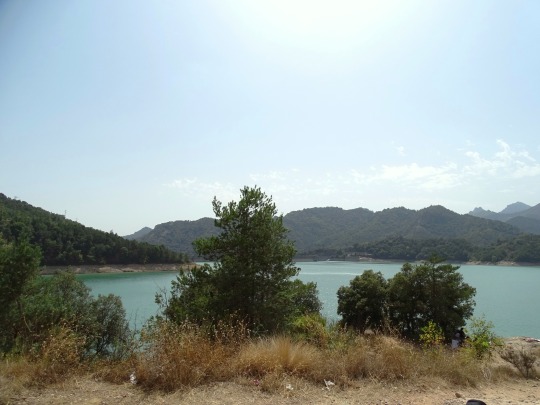

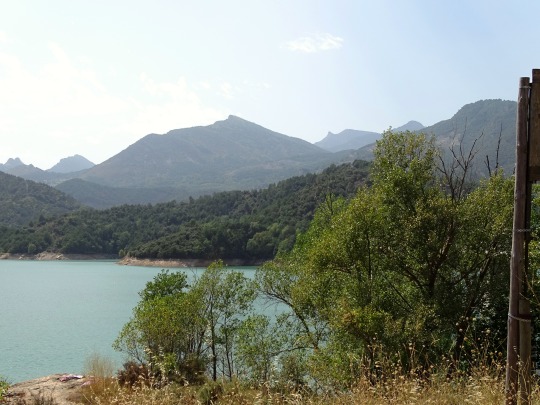




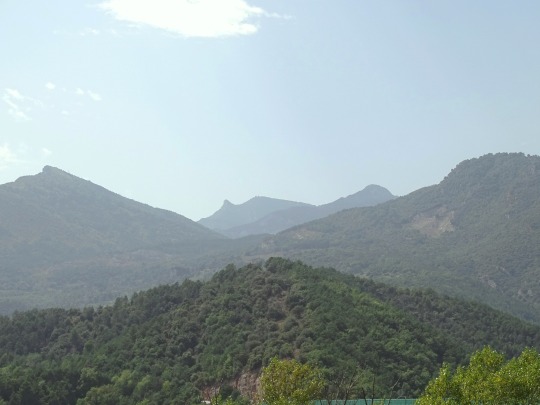
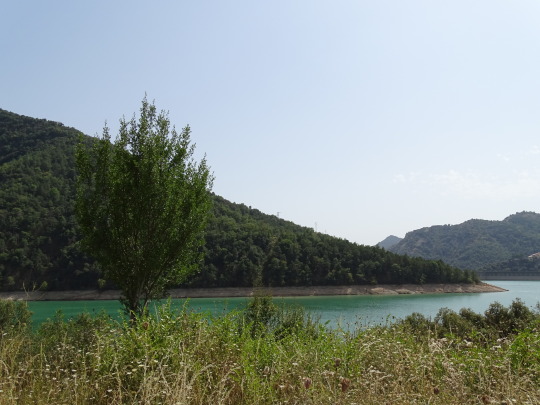



Pantà de la Baells, Spain (No. 2)
The dam, with a double curvature arch, was inaugurated in 1976.1Concrete containing boulders of different sizes was used in some places and, in others, reinforced concrete.
Its construction caused the displacement of the village of San Salvador de la Vadella, which was under water, and scattered houses to a newly built village, Sant Jordi de Cercs, the closure of the railway line from Guardiola de Berga to Olvan-Berga in 1972 and the construction of the Vilada bridge.
In its waters you can practice rowing, sailing and motor navigation at less than 16 knots.
The banks of the swamp are considered of interest for flora and fauna. In its waters you can fish carp, pike, pike perch, black-bass, catfish and some trout.
Source: Wikipedia
#Pantà de la Baells#Baells Reservoir#lake#travel#original photography#vacation#tourist attraction#landmark#landscape#architecture#countryside#forest#woods#summer 2021#province of Barcelona#Catalonia#España#Southern Europe#Northern Spain#lake shore
5 notes
·
View notes
Text







Cardona salt mountain, Cardona, Province of Barcelona, Spain
Manuel Torres Garcia
0 notes
Text

Reception are of an office in the province of Barcelona featuring STUA Libera armchairs with walnut frame and three different shades of warm kvadrat Remix fabric. PROJECT: www.stua.com/design/esteve A project by Esteve Interiorisme Photos Pau Esteve
53 notes
·
View notes
Text
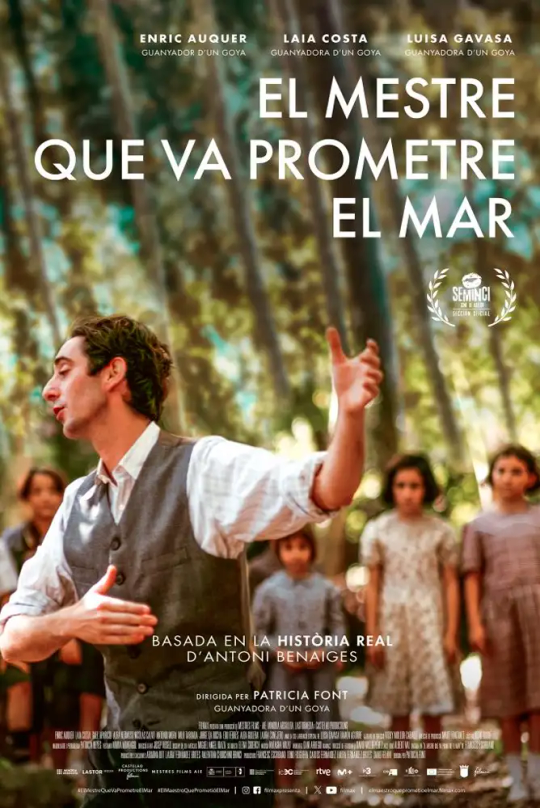
youtube
Period dramas- El Mestre Que Va Prometre El Mar (The teacher who promised the sea) (2023)
7,7/10 ⭐ on IMDB
The film focuses on the life of Antoni Benaiges , a teacher from Mont-roig del Camp, in the Baix Camp, in Tarragona, Catalunya, who in 1935 was sent to the public school in Bañuelos de Bureba, a small town in the province of Burgos, Castilla la Vieja (Castilla y León). Little by little, and thanks to a pioneering and revolutionary teaching methodology for the time, he will begin to transform the lives of his students, but also that of the town, which is not always to everyone's taste.
It's based on the book of the same name by Francesc Escribano and has been adapted for the big screen by Albert Val, and its director is Patrícia Font.
To tell the story of Antoni Benaiges (Enric Auquer), the film interweaves past and present and the master's story will be known through the eyes of Ariadna (Laia Costa), a woman looking for her great-grandfather who disappeared during the Civil War.
The producers of the film wanted to emphasize the essence of this exciting story: " 'El mestre que va prometre el mar' is a great story that has been unfairly forgotten for many years. With this film we are repairing an oblivion and at the same time valuing the work of the republican teachers and recognizing the struggle of so many people who still continue to search for their relatives buried anonymously in mass graves. An exciting and fully valid story.
Part of the technical team is made up of David Valldepérez, director of photography; Josep Rosell, art director; Dani Arregui, editor, and Natasha Arizu, composer, among other professionals.
The film is shot for six weeks in various locations in the demarcation of Barcelona, in Mura, and in Briviesca (Burgos). It is a production of Minoria Absoluta, Lastor Media, Filmax and Mestres Films AIE.
RTVE and TV3 participate and it has the support of the ICAA and the ICEC . Filmax is in charge of distribution to cinemas.
Length: 1 h 45 min
Premiere: November 10th 2023
Cast
Enric Auquer: Antoni Benaiges
Laia Costa: Ariadna
Luisa Gavasa: Charo
Ramón Agirre: Adult Ramón
Gael Aparicio: Carlos
Alba Hermoso: Josefina
Nicolás Calvo: Emilio
Antonio Mora: Mayor
Milo Taboada: Priest Primitivo
Jorge Da Rocha: Camilo
Eduardo Ferrés: Rodríguez
Alba Guilera: Laura
Laura Conejero: Rosa
Xavi Francés: Education inspector
David Climent: Falangist Chief
Felipe García Vélez: Adult Carlos
Elisa Crehuet: Adult Josefina
Padi Padilla: Encarna
Alicia Reyero: Ángeles
Gema Sala: Jacinta
Alía Torres: Ariadna's daughter
Carlos Troya: Bernardo Ramírez
Arnau Casanovas: Portraitist
Laura Gaja: Elvira
María Escoda: Juana
Chus Gutiérrez: Archivist
Joan Scufesis: Sergio
Cristina Murillo: Residency nurse
Sara Madrid: Hiker
Pep Linares: Falangist waiter
Albert Malla: Radio announcer
Izan Barragán: Leandro (School boy)
Didac Cano: Casimiro (School boy)
Hernán Gracia: Eulogio (School boy)
Noa Guillén: Asunción (School girl)
Ona Macía: Saturnina (School girl)
Elena Moreno: Dionisia (School girl)
Gal-La Petit: Hilaria (School girl)
Genís Lama: Falangist
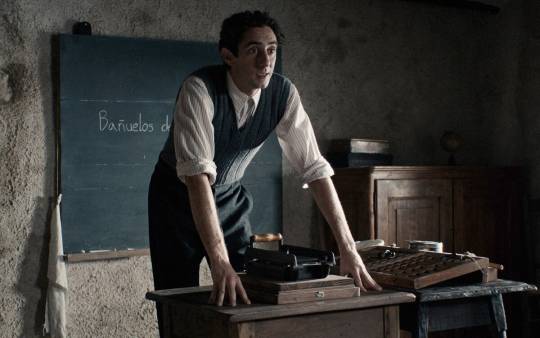
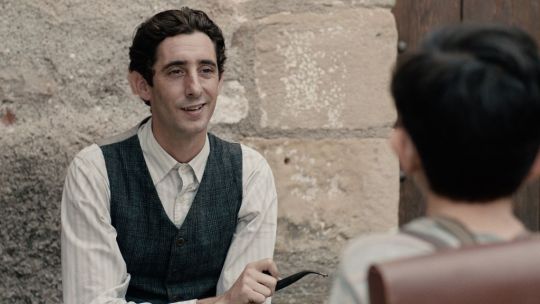
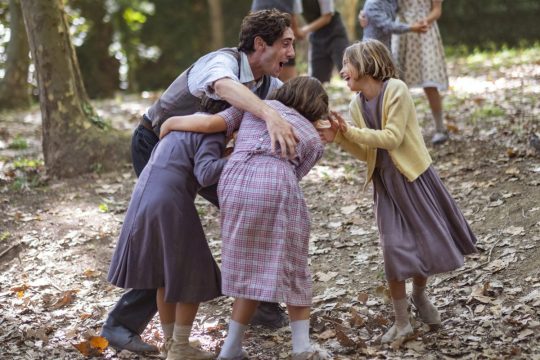

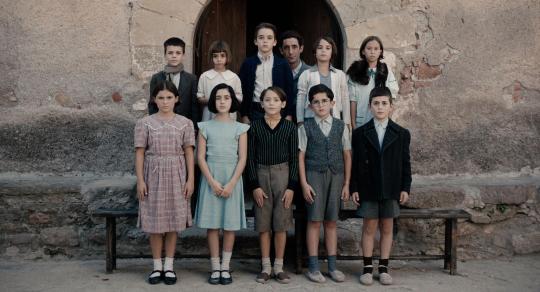
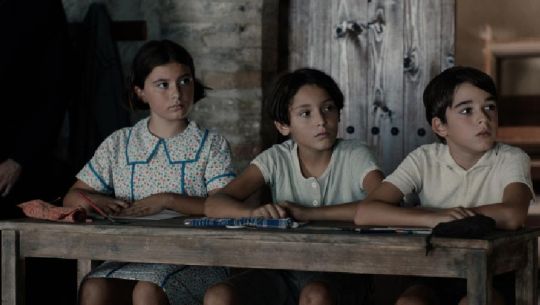
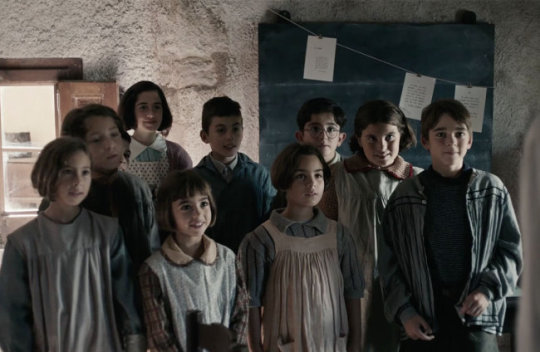


#el mestre que va prometre el mar#the teacher who promised the sea#films#period dramas#Youtube#enric auquer#laia costa#luisa gavasa#ramón agirre#gael aparicio#alba hermoso#nicolás calvo#antonio mora#milo taboada#jorge da rocha#eduardo ferrés#alba guilera#laura conejero#xavi francés#david climent#felipe garcía vélez#antoni benaiges#elisa crehuet#padi padilla#alicia reyero#gema sala#alía torres#carlos troya#arnau casanovas#laura gaja
36 notes
·
View notes
Text



Borgo Parrini is a beautiful artistic village,Italy
Nestled amidst the rolling hills and picturesque landscapes of Sicily, Borgo Parrini stands as a testament to the rich tapestry of Italian history and culture. Located in the province of Palermo, this quaint village embodies the timeless allure of Sicilian life, offering visitors a glimpse into its storied past and vibrant present.
Borgo Parrini is a charming, Gaudì-esque town filled with painted houses & cobblestone streets, reminiscent of Barcelona. By the 1970s, the town was virtually abandoned. In an attempt to revive the town, local resident Giuseppe Gaglio decided to spearhead this project.
7 notes
·
View notes